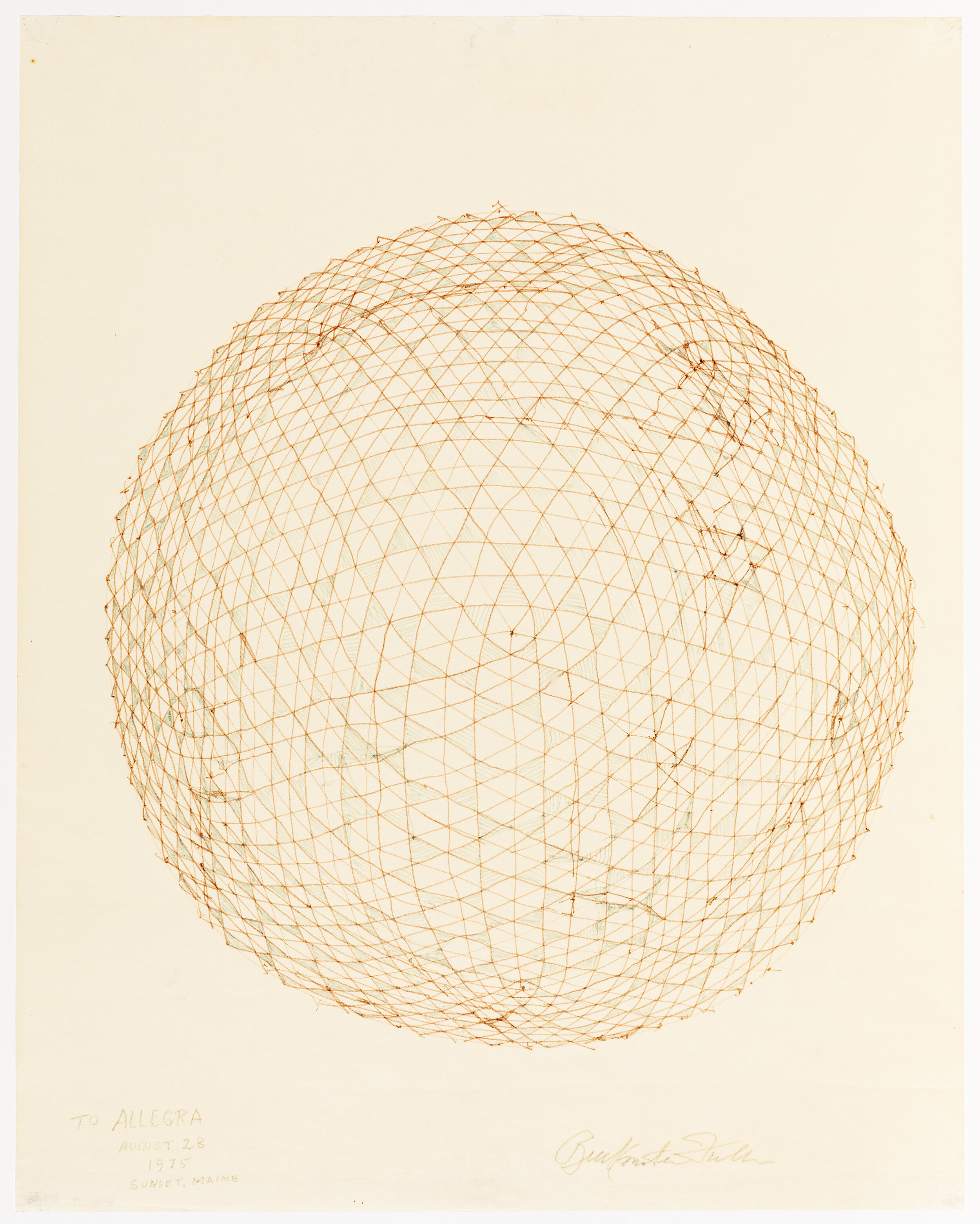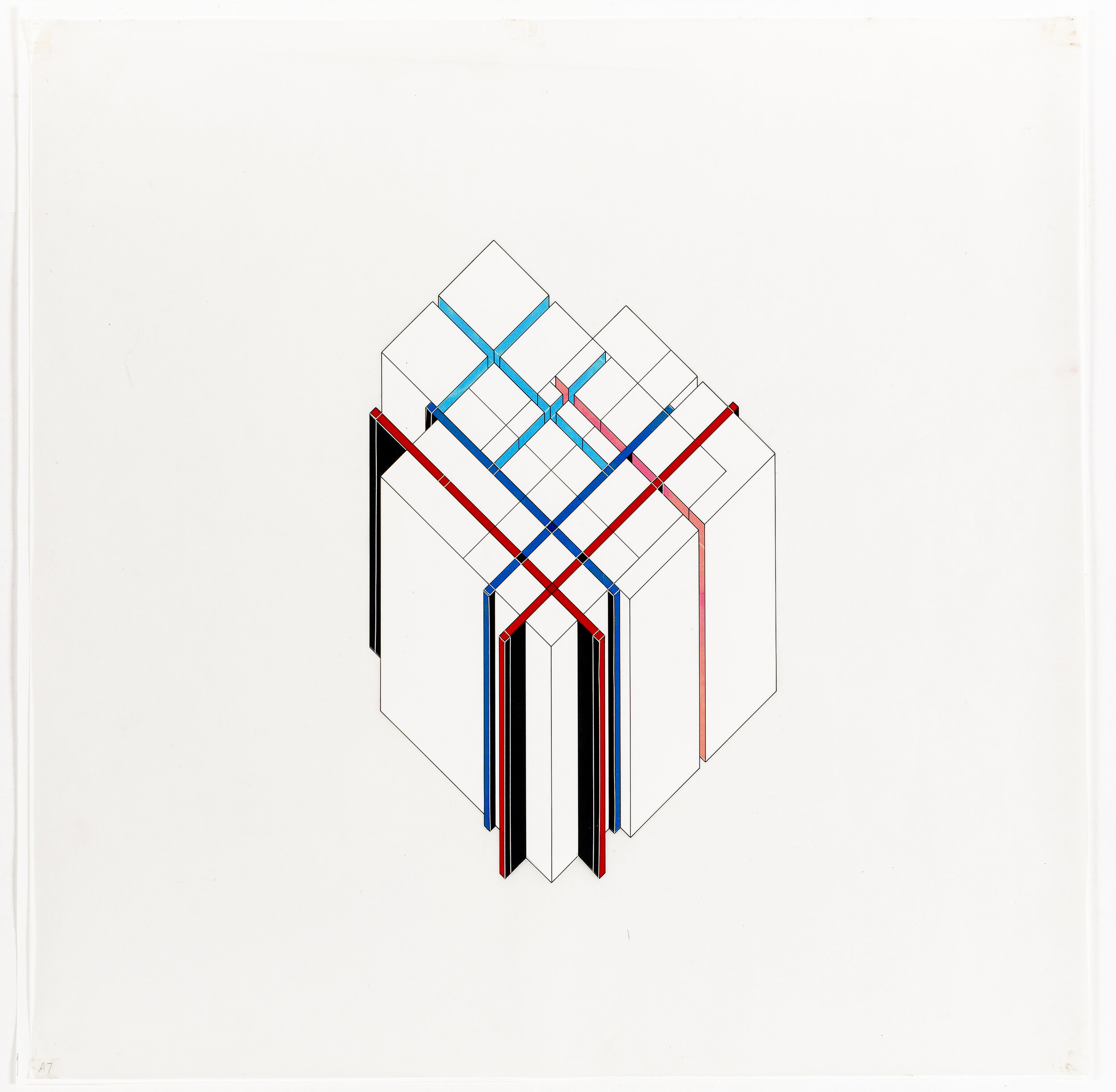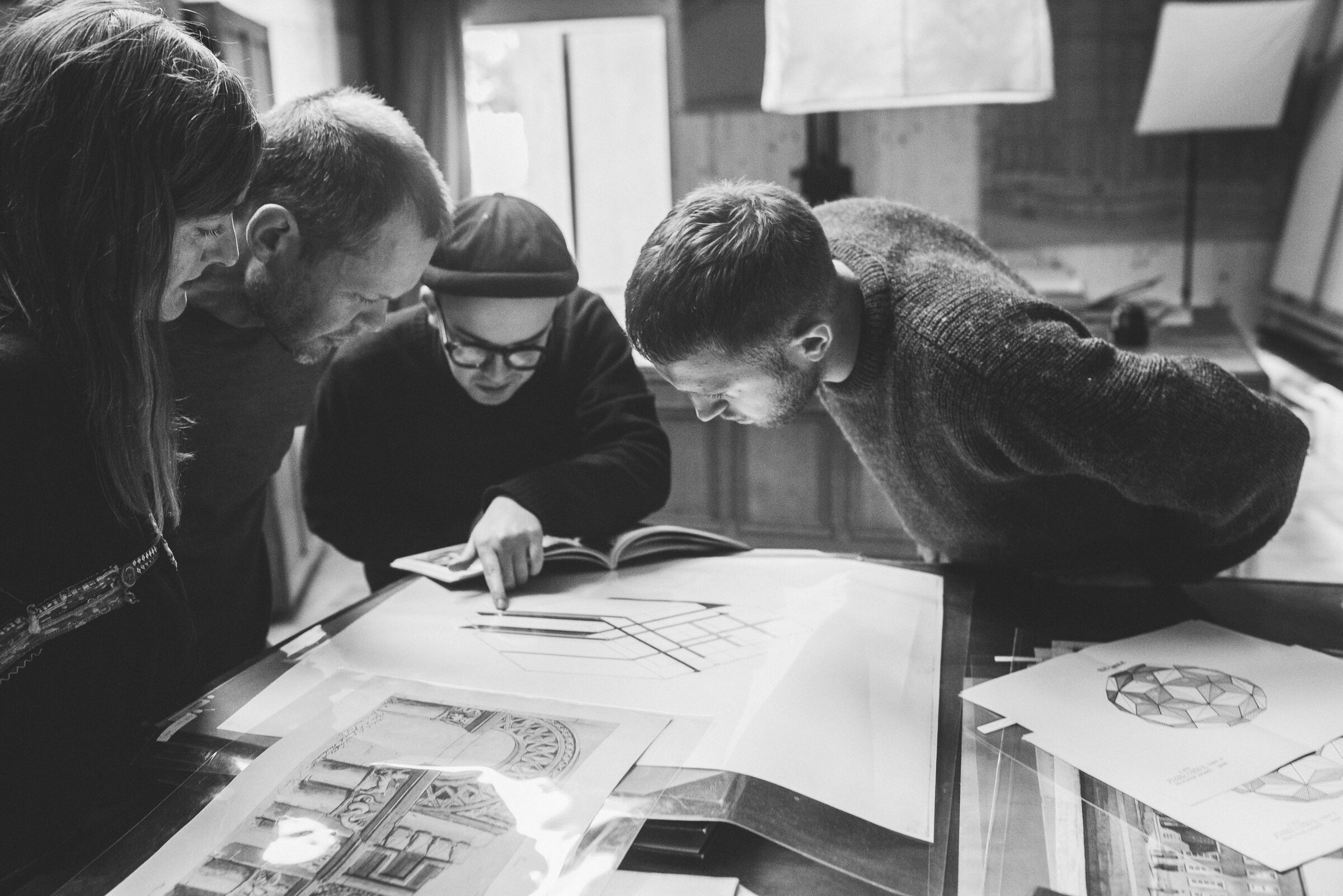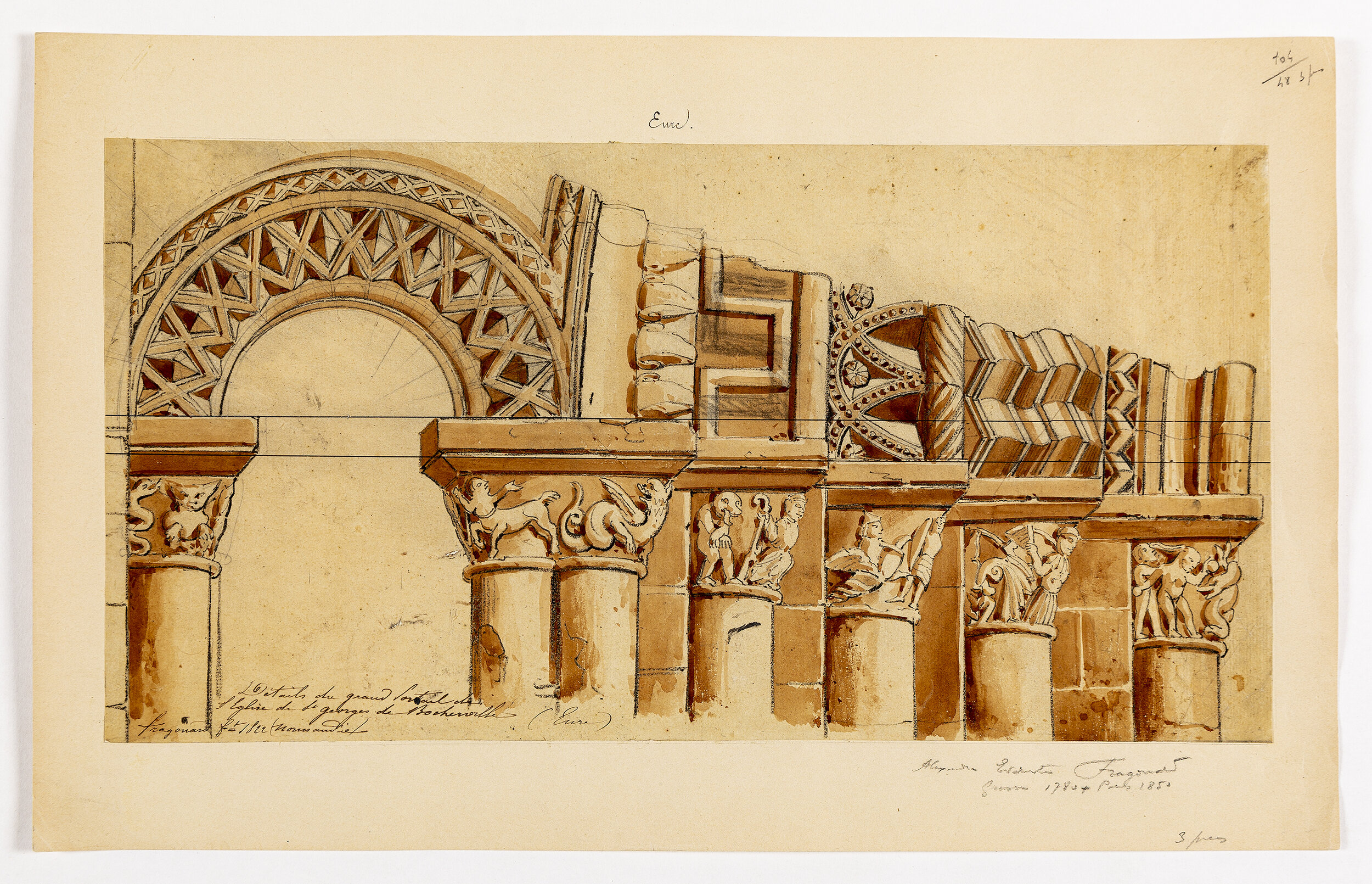In the Archive: Drawing Matter at Shatwell Farm
As we started our research for Destination Lydney Harbour we paid a visit to Drawing Matter, the home of an enormous and fascinating collection of architectural drawings. We were looking for inspiration, but what we weren’t prepared for was to see such early thought processes - scribbles and first ideas - an exciting part of design when the work could become anything. It felt very exciting and inspiring and the fact that Niall Hobhouse and Matt Page value this delicate stage of a process made Drawing Matter a very special place to us. We definitely found our inspiration, and we invited Matt Page to write about his role at the archive.
The Drawing Matter collection is a collection of architectural drawings housed at Shatwell Farm in Somerset. It is the anchor of Drawing Matter, an organisation that explores the role of drawing in architectural thought and practice.
Photo: Dave Watts
In normal times, we welcome a large number of in-person visits to the drawings collection. The autumn is a particularly busy time with many visits being made by teaching studios and by individuals whose research has, sometimes to their amusement, led them to a farm in the English countryside. Russell and Eleanor visited the collection in September 2020, managing to slip-in just before the Covid tier system was introduced, which put paid to or postponed most planned visits. When they invited me to write this short account about what Drawing Matter is and what I do there, I thought that describing a publication project that we were working on at the time of their visit would provide a good summary. In describing the project, it will hopefully become clear why two artists would come to the drawings collection, and what value it might have for their own work.
The publication project is titled Drawing Matter Extracts. It is an offshoot of Drawing Matter’s website, www.drawingmatter.org, which is an ever-growing repository of critical writing on making drawings and the roles that drawing plays in architectural practice and culture. The idea behind the Extracts publications is to lift texts from the website and organise them around a theme. For the first issue (which we were doing when Russell and Eleanor visited) we chose the theme of ‘beginnings’, in part because it seemed a logical place to start a new venture, but also because the drawings collection holds a large amount of material that describes both the starting points of design projects and records of design processes – in some cases, we have the complete archives of an architectural project from sketchbooks to presentation drawings.
We framed the publication’s title as a question, ‘Where to Begin?’, and set about collecting together texts from the website, the architectural library on the farm and commissioning a few new pieces of writing. In the end, the publication took nearly the whole of 2020 to compile and ran to three volumes; it turns out that the question has as many answers as there are designers – or, even, as many answers as there are projects. Together, the three parts loosely track five-hundred years of architects’ and designers’ starting points, from the full-size medieval ‘drawings’ made using stakes and ropes to more recent contemporary approaches.
An important part of making the publication was to present it in the way that it was assembled. We saw the anthology as being something like a simulation of one of the workshops or seminars in the drawings collection that we would have been delivering, and have delivered many of in the past. To this end, working with the designers Lucy or Robert, we conceived a slightly eccentric folding format that measures half of an A1 sheet, cut longways, when unfurled. The format has caused no end of irritation to some of the publication’s readers but, we feel, it makes a good attempt at replicating some sense of how the drawings are used and interacted with in the archive building in which the drawings are kept. One great thing about the format is that it allows for a number of 1:1 drawings to be presented in a single spread, something that would be impossible in a more conventional book design.
Spreads from the Drawing Matter Extracts 1: Where to Begin? showing Post-it note sketches by Zaha Hadid at 1:1 scale (above) and pages from a sketchbook used by the Portugese architect Álvaro Siza (below).
In comparison, photographs of the archive in which the drawings collection is kept and explored. The building was designed by Hugh Strange specifically for the Drawing Matter collection. These photographs were taken by Dave Watts during Russell and Eleanor’s visit and capture the warmth of the cross-laminated timber building, natural lighting and the experience of sifting through the drawers and portfolios of drawings.
Above: Chandelier and a geodesic sphere drawing both by Buckminster Fuller.
Above: looking at a drawing by Peter Eisenman for his House VI project with Russell and Eleanor and Jai Heming. The drawings soon pile up…
Above: A buckminster Fuller patent and a nineteenth century study of ornament on the portal of the Abbey of St. Georges de Boscherville by Alexandre-Évariste Fragonard.
One of our hopes for the Where to Begin? publication was that readers would pull it apart and pin the spreads up on their walls – and we did receive a photograph from someone who had done exactly that. In some ways, making a publication that wills its readers to dismantle it might seem like an anti-editorial project – surely the job of the editor is to prescribe or frame something in a specific way? – but I think that this quite effectively shows the slight irreverence that Drawing Matter brings to all of its projects. I think, too, that it is this attitude that shows why a visit to the collection has a value for artists like Russell and Eleanor. With each new visit the collection is reframed by the particular interests of the visitor. Sometimes these are very specific – they want to see a particular architect’s work or a certain project – but in other cases a visit might be more of a derivé (a popular critical term in the archiving world…) and led by what is discovered in each drawing. Regardless of what form the visit takes, or what the initial reasons for visiting were, we find that it is nearly impossible to completely predict what will resonate with a visitor, either in the moment or in the days (or even years!) afterwards. For me, being in the position of facilitating these encounters, it is the futility of having a plan, or trying to second guess visitors, that brings the most satisfaction and where I think the value lies.
Matt Page, www.drawingmatter.org
For more about Drawing Matter and the drawings collection visit www.drawingmatter.org. The collection is open by appointment only. In an episode of the Kingston School of Architecture and Landscape’s podcast, Register, Niall Hobhouse, Drawing Matter’s Director, explains more about the origins of the drawings collection, and of Drawing Matter.










